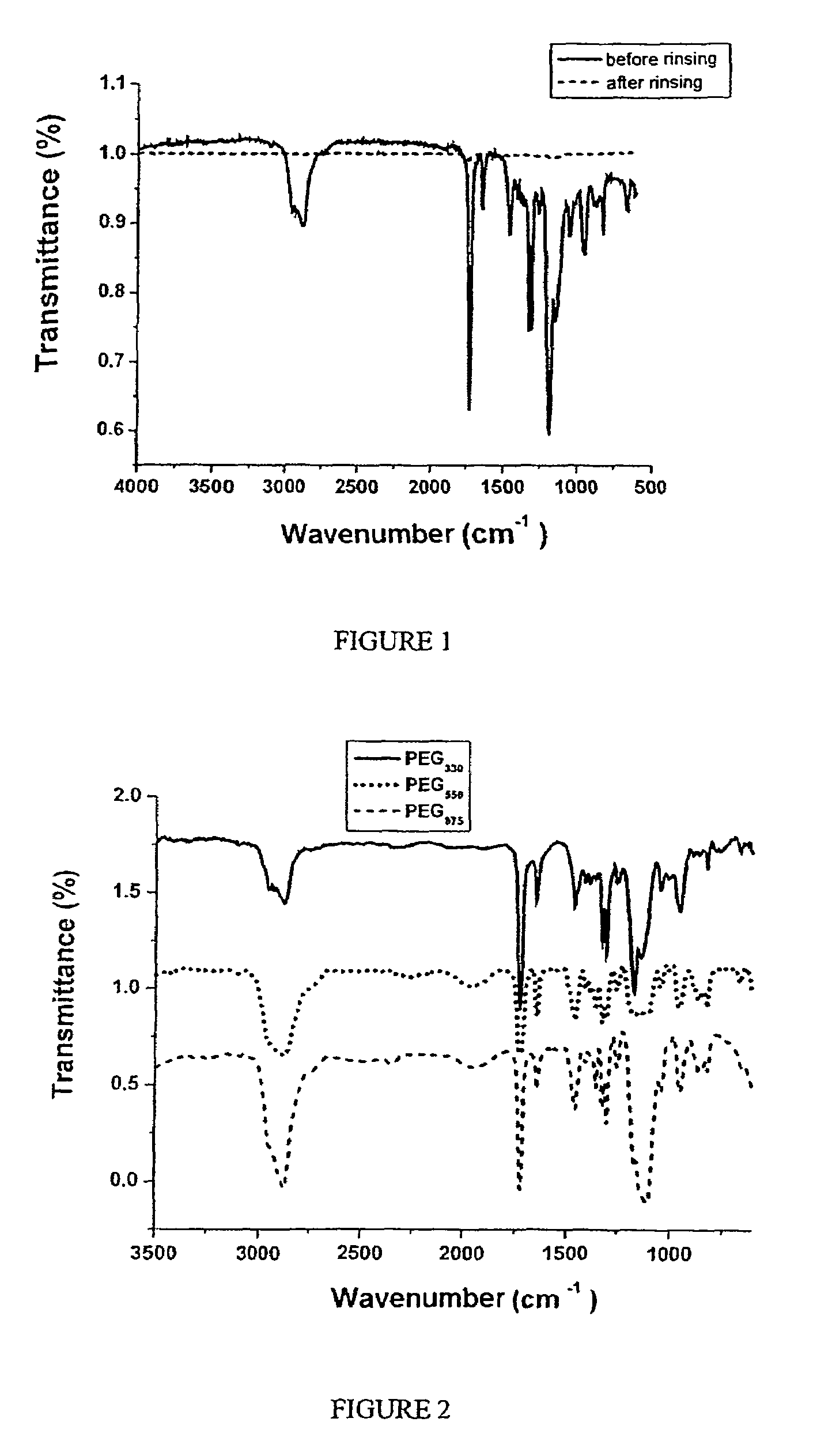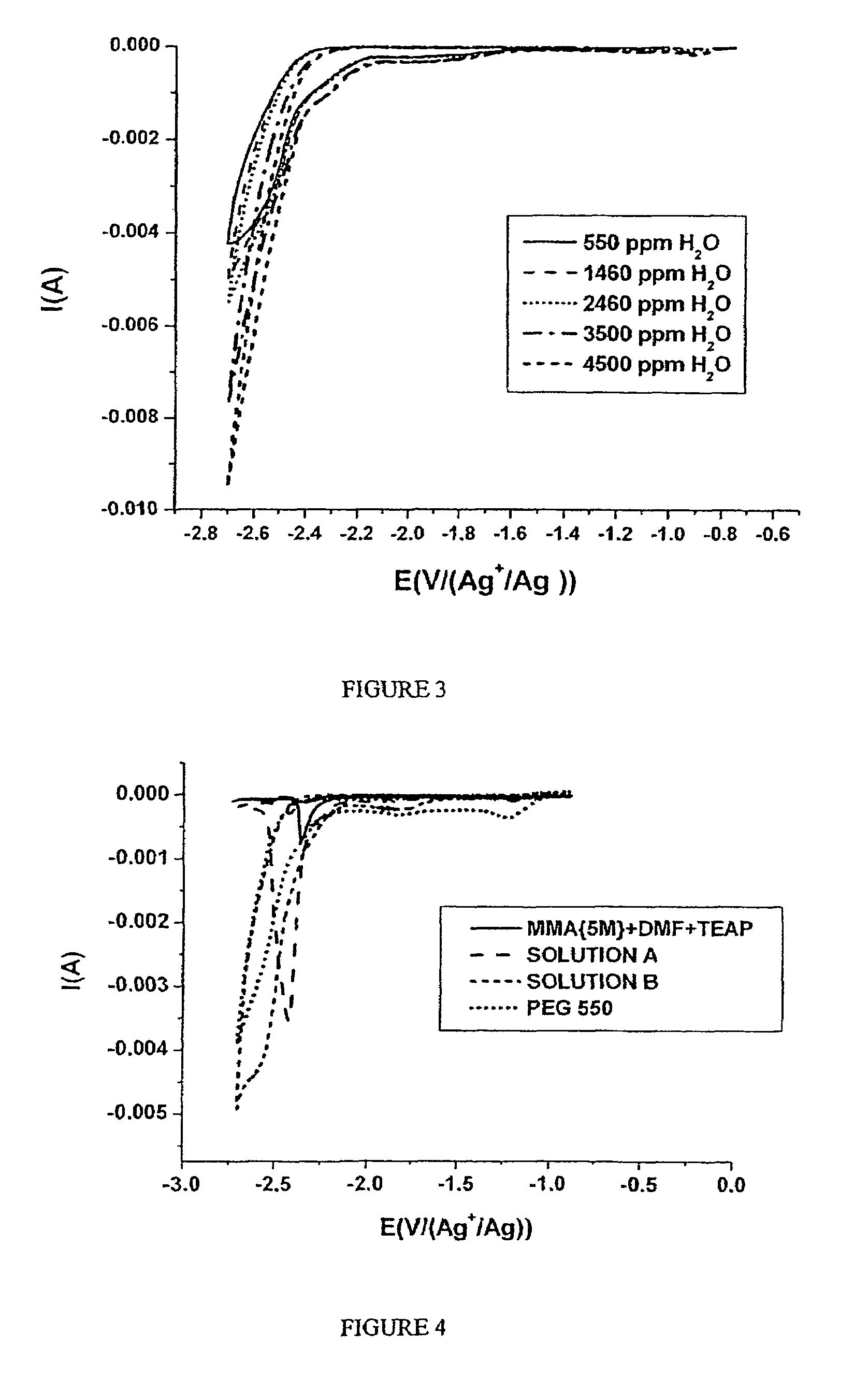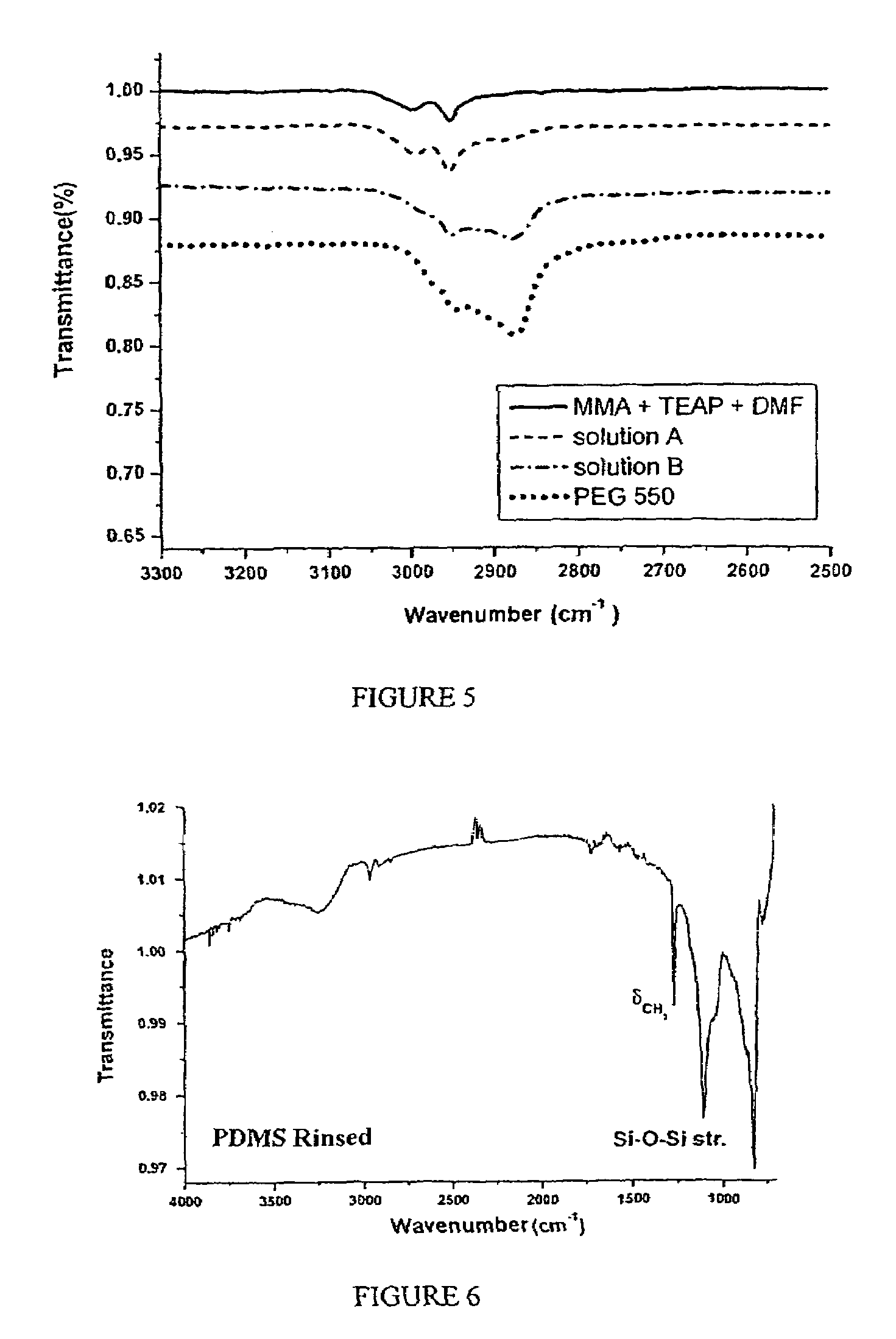Method of fixing macro-objects to an electricity conducting- or semi-conducting surface by means of electrografting, surfaces thus obtained and applications thereof
- Summary
- Abstract
- Description
- Claims
- Application Information
AI Technical Summary
Benefits of technology
Problems solved by technology
Method used
Image
Examples
example no.2
EXAMPLE NO. 2
Preparation of Films of Poly(PEG Dimethacrylate) Electrografted in the Presence of an Increasing Concentration of Water
[0171]The aim of this example is to demonstrate that the presence of water during the polarization phase is not prejudicial to the quality of the films obtained in accordance with the invention, but that, on the contrary, it is necessary for obtaining good quality and desired thickness ranges.
[0172]A gold slide is polarized in a 1 mol / l solution of PEG 550 dimethacrylate in DMF containing 5×10−2 mol / l of TEAP.
[0173]The water content of the medium for synthesis is adjusted before each polarization by adding volumes of distilled water to the solution, and is then measured by the Karl Fischer method.
[0174]Water contents ranging from 500 ppm to 4500 ppm were tested.
[0175]The potential protocol is as follows: voltammetric conditions with 10 scans from Einitial=−0.7 V / (Ag+ / Ag) to Efinal=−2.7 V / (Ag+ / Ag) at a rate of 100 mV / s.
[0176]The slides are then rinsed wi...
example no.3
EXAMPLE NO. 3
Preparation of Organic Films by Electrografting of Poly(PEG Dimethacrylate)-Co-Methyl Methacrylate
[0186]A gold slide is polarized in various solutions containing 5×10−2 mol / l of TEAP in DMF:
[0187]Solution A: 5 mol / l methyl methacrylate (MMA)+10% by volume PEG550 dimethacrylate;[0188]Solution B: 10% by volume MMA+1 mol / l PEG550 dimethacrylate;[0189]Solution C: 5 mol / l MMA alone;[0190]Solution D: 1 mol / l PEG550 dimethacrylate alone.
[0191]In this example, the proton content of the reaction medium is greater than 50 ppm.
[0192]The potential protocol is as follows: voltammetric conditions with 10 scans from Einitial=−0.7 V / (Ag+ / Ag) to Efinal=−2.7 V / (Ag+ / Ag) at a rate of 100 mV / s.
[0193]The first voltammograms for each of the various solutions A to D are indicated in FIG. 4, in which the current in amps is expressed as a function of the potential of the Ag+ / Ag counterelectrode.
[0194]The region 2500-3300 cm−1 of the IR spectra of the corresponding films obtained, represented in ...
example no.4
EXAMPLE NO. 4
Preparation of Electrografted Poly(Polydimethylsiloxane-Methacrylate) Films
[0201]The aim of this example is to demonstrate that it is possible to electrograft a macroelectrophile comprising only one electroactive group, in the presence of a proton content greater than 100 ppm. Besides the macromonomer used here, the essential differences with Example No. 1 above are:[0202](i) that the macromonomer carries only one electroactive electrophilic function (a methacrylate function);[0203](ii) that the macromolecular portion has a much higher mass (Mw=10 000).
[0204]The macroelectrophile used is a polydimethylsiloxane (PDMS)-methacrylate, of formula H2C═C(CH3)C (═O)—O—(Si(CH3)2—O—)nH, with n=134.
[0205]A gold slide identical to that used in Example 1 above is polymerized, by cathodic polarization, in a 0.05 mol / l solution of PDMS-methacrylate (10 g) in ethyl acetate (50 ml) containing 5×10−2 mol / l of tetraethylammonium tetrafluoroborate (TATB), under potentiostatic conditions ac...
PUM
| Property | Measurement | Unit |
|---|---|---|
| Fraction | aaaaa | aaaaa |
| Fraction | aaaaa | aaaaa |
| Water content | aaaaa | aaaaa |
Abstract
Description
Claims
Application Information
 Login to View More
Login to View More - R&D
- Intellectual Property
- Life Sciences
- Materials
- Tech Scout
- Unparalleled Data Quality
- Higher Quality Content
- 60% Fewer Hallucinations
Browse by: Latest US Patents, China's latest patents, Technical Efficacy Thesaurus, Application Domain, Technology Topic, Popular Technical Reports.
© 2025 PatSnap. All rights reserved.Legal|Privacy policy|Modern Slavery Act Transparency Statement|Sitemap|About US| Contact US: help@patsnap.com



